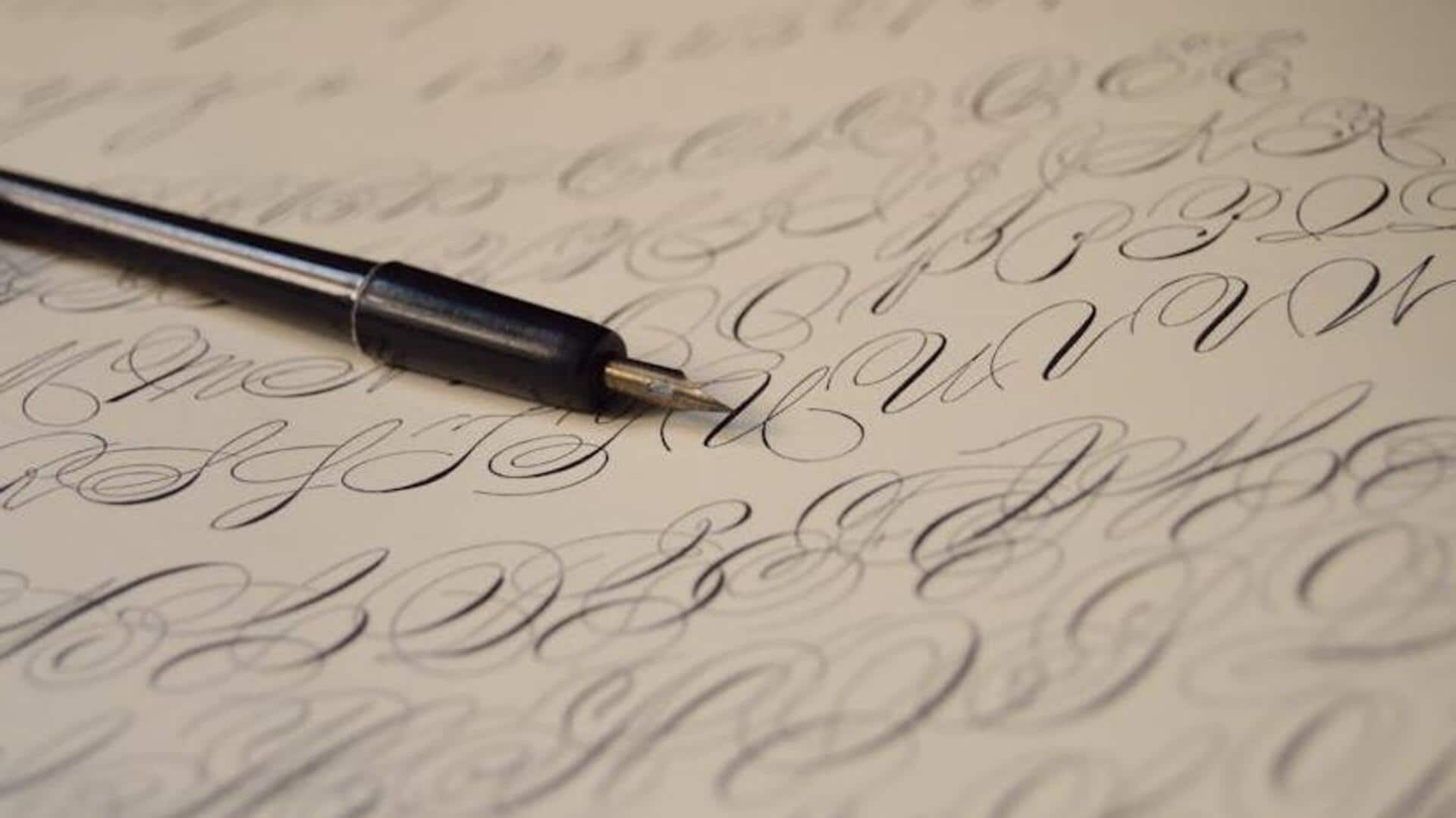
The timeless elegance of calligraphy and typography
What's the story
Calligraphy and typography are art forms that combine the beauty of design with the power of language. Calligraphy is the art of writing, while typography is the art of arranging type. Essentially, it makes written language legible, readable, and appealing when displayed. Both are important in many areas of design and communication, from branding to personal projects.
Foundations
Understanding the basics
Calligraphy and typography both strive to convey messages beautifully, but they use different methods. Calligraphy is the art of hand-drawing letter forms with pens or brushes, highlighting the artist's unique touch and style. Typography, however, focuses on arranging pre-designed letters or fonts. Understanding these differences is key for anyone looking to dive into either art form.
Equipment
Tools of the trade
Calligraphy requires specific tools like different nibs for various stroke widths, ink, and good quality paper that won't bleed or feather. On the other hand, typography is all about that software game. Think Adobe Illustrator or InDesign. These digital tools give typographers access to a ton of fonts and super precise control over layout and spacing.
Education
Learning resources
Many online platforms, like Skillshare and Udemy, provide a plethora of courses in both calligraphy and typography. They have courses for all levels, from novices to advanced learners. If you're interested in learning traditional techniques, The Art of Calligraphy by David Harris is a must-have. This book offers a profound understanding of the art form, making it a definitive read for enthusiasts.
Improvement
Practice makes perfect
Calligraphy: Progress in calligraphy hinges on regular practice. Start with fundamental strokes before moving on to letterforms and eventually words. Typography: For typographers, improvement comes from playing around with different font combinations and nailing the spacing. These might seem like small things, but they're super important for both calligraphers and typographers. They make written language not just readable, but beautiful to look at too!
Evolution
Trends in design
Just like calligraphy, typography also changes with cultural trends and technological advancements. While minimalist typography, with its clean readability, has become a screens-friendly standard in digital design, Modern calligraphy, with its rule-breaking creativity, is loved for its unique personality. These trends highlight the ever-changing landscape of design preferences in the digital age, demonstrating the adaptability of these art forms to evolving tastes and technologies.